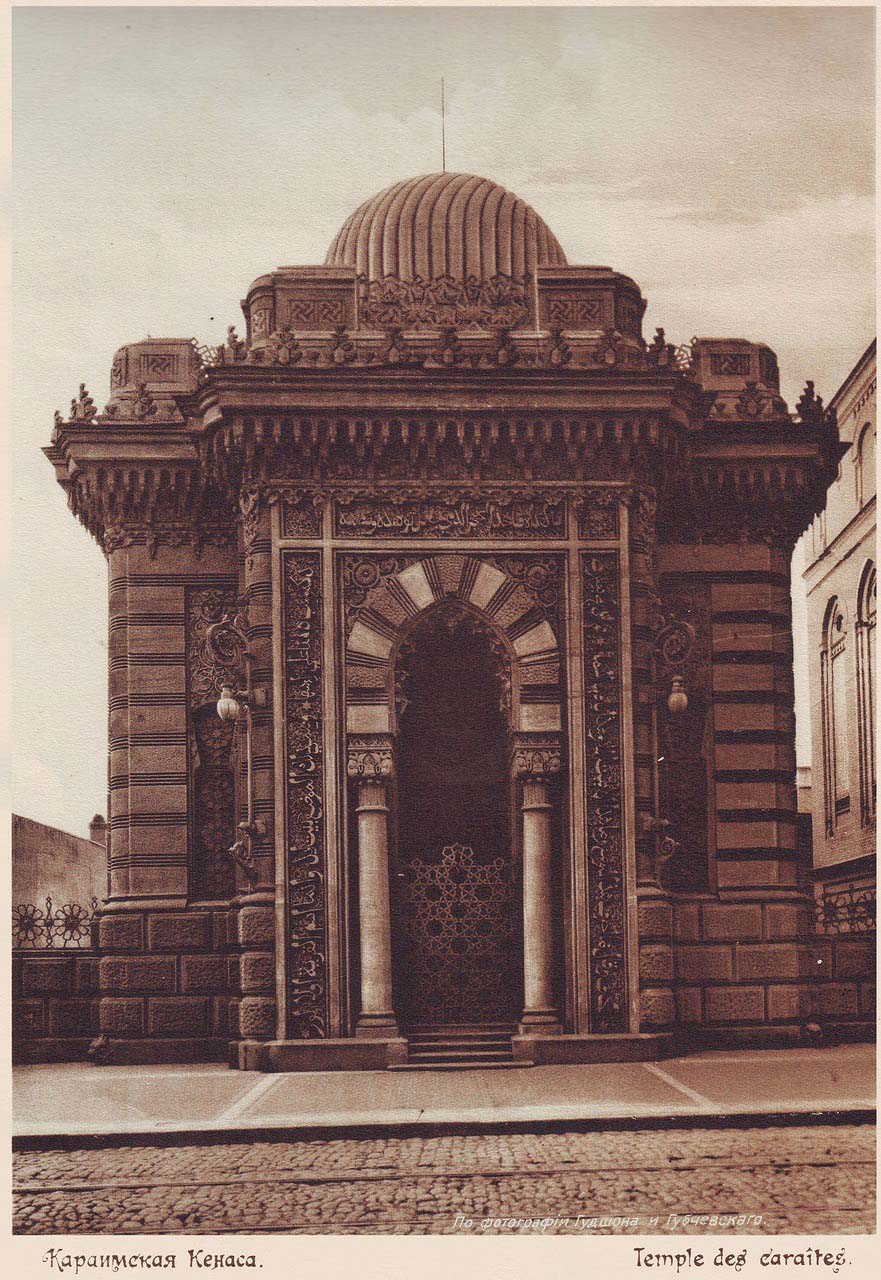Kenassa (a house of prayer for the Karaites in Eastern Europe) was built on the initiative of Solomon Cohen (Karaite philanthropist, tobacco manufacturer, head of the Kiev Karaite community) and with the blessing of the Kiev gazzan (Karaite clergyman who serves in the kenassa) Joseph Sultansky, is located next to baron’s castle and golden gate. The kenassa was built during 1898-1902 according to the design of the architect Vladislav Gorodetsky (known in Kiev for the building of the Ivan Franko Theater, St. Nicholas Church, house with chimeras, the building of the Art Museum of Ukraine) and engineer Anton Straus (was friends and worked with Gorodetsky on many of his objects). The building is distinguished by its beauty and luxury of decoration in the Moorish-Arab style. Nowadays the building (with its dome and interiors lost) houses the actor’s house.
The Karaite community of Kyiv in 1896 numbered 800 people, which at that time was considered a considerable number. To purchase a plot of land for the construction of a prayer and residential building, the income from which could go to the charitable needs of the Karaite community, Cohen allocated 35,000 rubles. Despite the fact that the entrepreneur was paralyzed in 1897, he continued to personally manage the business until his death in 1900. In his will, he provided, among other things, funds for completing the construction of the kenassa. Cohen’s work was continued by his brother, Moses. In total, about 200,000 rubles were spent on construction. The ceremonial consecration of the kenassa took place on January 27, 1902.
The building was decorated with an elegant dome and extremely beautiful stucco decorations by the Italian Elio Sal (he worked closely with Gorodetsky; in addition to working on the Kiev architect’s objects, he was also noted for the creation of the building National Opera of Ukraine, the main building of the KPI, NBU building) with using a rather expensive material at that time – cement. On the base of the disappeared dome you can still see the stucco ornament in the form of an endless swastika, but to do this you need to go to the opposite side of the street. At the central entrance on the right, top and left there is an inscription in Arabic – translation of Bereshit (Genesis) 28:17-19:
“And he was afraid and said: How terrible is this place! This is nothing other than the house of God, this is the gate of heaven.
And Jacob arose early in the morning, and took the stone which he had put for his head, and set it up for a pillar, and poured oil on the top of it.
And [Jacob] called the name of that place Bethel, but the former name of that city was Luz.”
After the establishment of Soviet power, the kenassa was closed and the activities of the religious community were stopped. Since 1926, the building of the former kenassa housed a political education institution, and later a puppet theater. During the Great Patriotic War, the kenassa suffered irreparable damage – the brilliantly executed dome of the temple with a spire was lost forever, which was not restored during the reconstruction of 1968 for some reason. Since 1952, the building has housed the Zarya cinema. In the 1970s, a small room was added to the kenassa, through which one could easily enter the building without going through the main entrance.
Currently, the house of worship is not being used for its intended purpose – its building is occupied by the National Union of Theater Workers of Ukraine; the actor’s house has also been located in kenass since 1981. The Kiev Karaite National Society defends the right to return this religious building to the community, which as of 2010 numbered only 43 people…
Where is the actor’s house (Karaite kenassa)?
Yaroslavov Val street, 7


